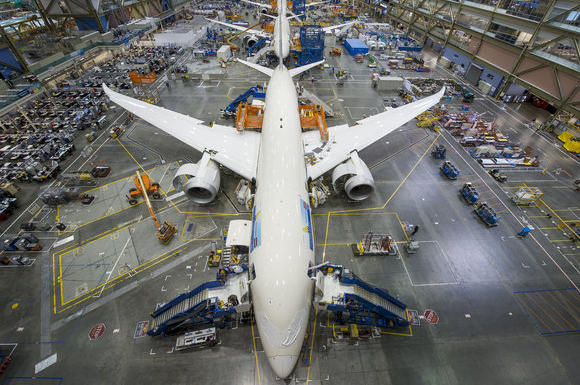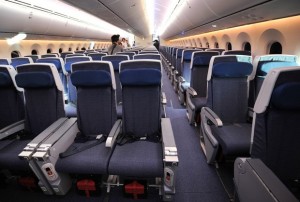Finally, “after months of headaches brought on by its 787 Dreamliner jet, Boeing Company is now back on track and even speeding up the production rate of the new airliner.”
This is fantastic news for the Dreamliner program being that starting from January 16th until late April of this year, all of the Boeing 787s had been grounded due to some safety concerns with the plane’s lithium-ion battery system. The influential aerospace company has stated that they have since increased the jet production rate to seven airplanes per month at one of its factories in Everett, Washington, and claims that the Dreamliner program is set to reach a further increase to ten per month by the end of the year.
Before the grounding, Boeing had delivered fifty of the Dreamliner planes to eight different airlines worldwide, including United Airlines, which is the only U.S. carrier that operates 787s currently. Today the Dreamliner program has more than 800 unfulfilled orders to 58 customers worldwide. Hence, the immediate need for Boeing to fix the jet’s design flaws and production challenges they were facing. The Federal Aviation Administration grounded Boeing’s newest and most technologically advanced jetliner until the risk of battery fires was resolved. During the time of the grounding order, Boeing had not been allowed to deliver any new 787 Dreamliner’s but continued building them. The company had to seriously look at the jet program’s operations and reevaluate some of their critical decisions.
The final assembly of the Dreamliner’s takes place at the Everett facility, but the bulk of the jet’s large components come from numerous suppliers around the world so the time putting these planes together is influenced heavily on the getting the parts in quickly. “There are about 50 suppliers in California alone.” But the major production slowdown was due to Boeing having to redesign the 787’s battery system due to some overheating incidents that had occurred. One incident even resulted in a fire.
Although “Boeing will not say how much redesigning, testing, and retrofitting the battery system has cost the company,” officials have stated that the cost was absorbed into spending $705 million in research and development during Boeing’s first quarter. The three-month grounding period of the Dreamliner created a 2.5% downturn in revenue for the company, which came out to be around $18.9 billion. Despite all the production troubles Boeing has encountered recently, the company now firmly states it is back on track to deliver more than 60 of the planes during this year as originally planned. But the question is whether the Dreamliner will now stick in the pubic’s mind as a troubled aircraft?
In addition to the increased production of the Dreamliner jet, Boeing has also increased production of its 737 and 777 jets and is forecasting to deliver as many as 645 planes this year, making this a record for the company.
Which types of critical decisions did Boeing have to reevaluate? Do you think that the grounding of the Dreamliner will or has had any effect on the company or the plane’s reputation? Which types of forecasting methods do you think Boeing is using in regards to their production ability and what other factors does Boeing need to consider?
Article Reference: http://www.chicagotribune.com/business/breaking/la-fi-mo-boeing-787-production-rate-20130510,0,6024577.story


